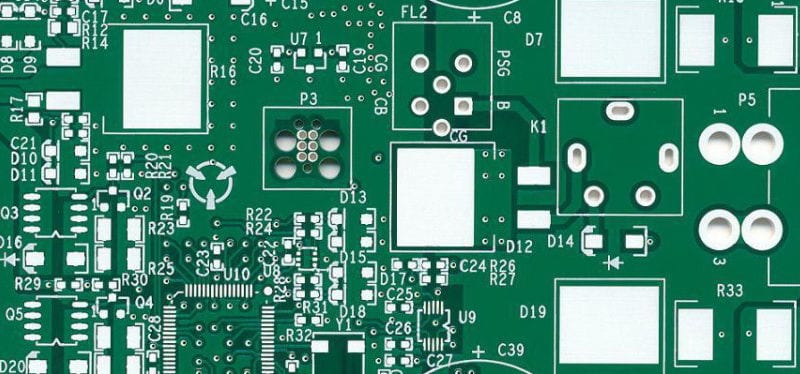In the never-ending search for the best possible surface finish on printed circuit boards, there is quite a bit to be considered. Circuit density (line width, line space and SMT pitch), solderability, surface flatness (for SMT applications), and shelf life to name a few. Let us start with a bit of history:
The industry has used a variety of surface finishes when it comes to achieving a good solderable joint on a through-hole or SMT pad (this goes back to before SMT components and lead-free finishes to meet RoHS requirements). Going back a few decades, eutectic solder (63/37 tin lead) was the industry norm. This type of solder was applied via plating the surface using it as an etch resist fusing, roll tinning, or solder leveling. Since a solder was used, the copper surface was fully coated. Eutectic solder pastes, or wave soldering systems, made for good wetting and fillets. As environmental changes occurred, the industry adopted HASL processing and plated finishes via electrolytic or immersion types.
Looking at HASL finishes, there are two types to consider – leaded and lead-free. The most common, due to RoHS compliance, is Lead-free HASL. This process uses a coating system consisting of a large solder pot and a controlled arm that holds the circuit board panel while it cycles in and out of the solder pot. Flux and heated air knives are used to eliminate excess solder on exposed surface areas. This process is very aggressive on the panel as it sees temperatures of 480ﹾF (249ﹾC) or greater based on the panel type. That being said, it goes without saying that this is a bit of a thermal shock to the panel. This process leads to the leading edge seeing these high temperatures for roughly 10-20 seconds. If you have thick or heavy panels the cycle time may be longer in order to get the panel to temperature for proper coating. The surface is smooth and shiny, but usually has a slight bump due to the flux and air knives as the panel is withdrawn from the solder pot. This bump can pose placement issues on small or fine pitch SMT components, and the process adds another thermal shock to the circuit board. Shelf life in this case is typically about 12 months.
Immersion Silver is a chemical deposition process that coats the exposed copper areas with 6-20 microns of thickness. The process gives you a good solderable surface without the thermal shock and long-term whisker growth that one would see with the immersion tin processes. The resulting surface is flat and allows it to be used with fine pitch SMT components along with being compatible with most solder pastes. This is because it disperses with the paste and creates the intermetallic bond to the copper. The finish is used on single and double sided SMT designs allowing for two solder paste cycles. Shelf life in this case is typically 6-12 months based on packaging and timing of soldering the assembly.
Immersion Silver finishes have been gaining popularity over the years for many reasons. As mentioned previously, it allows solder to spread properly on the boards, in turn creating a flat and smooth surface. This allows the assembler to better solder components on the boards. Another great advantage of utilizing Immersion Silver is that it is RoHS compliant finish and considered environmentally friendly. This is something to take into consideration for future designs as the standard for manufacturing will inevitably continue to head in a more “eco-friendly” direction, potentially affecting contracts between manufacturer and consumers. The last benefit to mention (although there are many more) is their comparison to OSP finishes. In comparison, silver in circuit boards through immersion silver finishes have a better resistance to environmental ageing and have the capability to survive multiple reflow. Aurora works with customers to provide the best finish for their application. We have OSP, ENIG, ENEPIG, Hard Gold, Bright Nickel, Electroplated Silver along with the surface finishes mentioned earlier.
Interested in seeing what solutions we may have for your current or new designs? For more information about Aurora Circuits capabilities, please visit our website at www.auroracircuits.com/solutions/. You may also contact us directly at contact@auroracircuits.com or via phone at (630) 978-3830.





